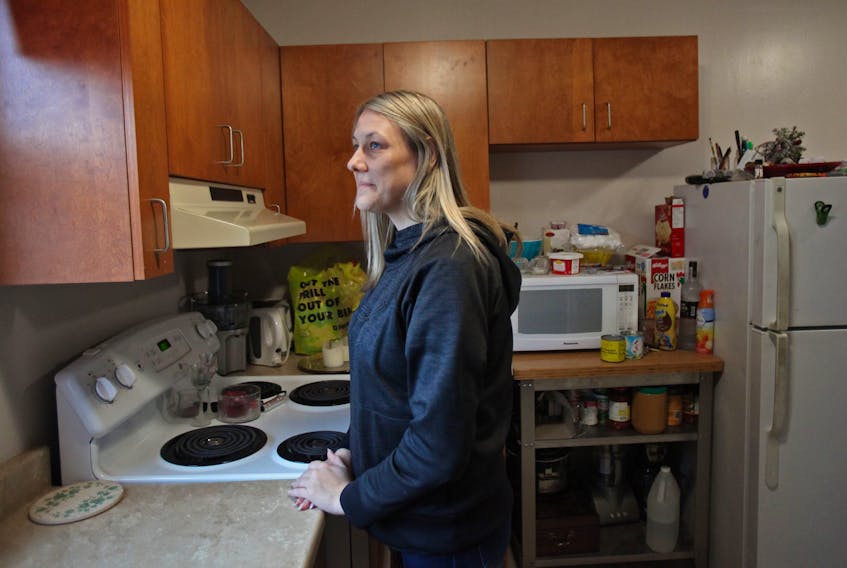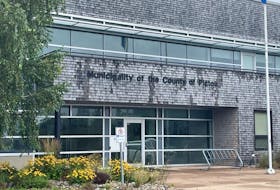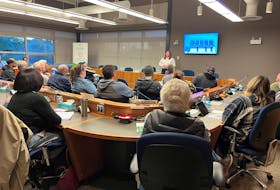Anti-poverty advocates say Nova Scotia's new standard household income assistance rates that took effect on New Year's Day fail to address the core issue that assistance is inadequate to begin with.
Mark Culligan, a community legal worker with Dalhousie Legal Aid Service and a member of the Benefits Reform Action Group (BRAG), said income assistance still doesn't rise to the poverty line.
"And if we take into account inflation, then the increases aren't meaningful because when the transformation process began, they did not index the rate increases each year, so the real-world value is less than when it started."
According to the province's website, the standard household rate for a single person who rents or owns their home and is able to work is $586 a month. That goes up if you have dependants to a maximum of $1,193 a month for a couple who are able to work and have one or more dependants. For those who are disabled, the monthly rate for a single person living alone who rents or owns their home starts at $850 a month. The maximum is $1,193 per month for a disabled person living with a spouse and one or more dependants. Those rates vary for others who board or are in a shelter, transition house, hospital or rehab facility.
The new rates are an increase of between two and five per cent over the previous rates based on a number of qualifying factors.
The standard rates are the culmination of a five-year income assistance reform plan that was called Transformation.
"It's a laughable amount," Culligan said. "It was laughable when it was first introduced and each year that goes by, it's worse and worse."
Jodi Brown, anti-poverty activist and member of BRAG, has a different word.
"I think it's criminal," she said on Thursday.
"We have the highest child poverty rates in the country. That's roughly 30,000 children every day go hungry in our province. And they spent millions of dollars on this Transformation. And the most somebody would see is a $40 (increase). So an individual who was receiving $810 will now receive $850 a month. That's for your groceries, that's for your bills, that's for your rent, that's for everything. That's impossible to live on.
"This will not help anybody because they can't afford food right now. We have individuals that can't even afford tampons or pads. They have to use toilet paper or rags."
And she wonders at the stigma people face for being poor.
"A big thing is stereotyping," she said. "People automatically assume you're lazy so you don't deserve it anyway. But we're talking about the most vulnerable people in our province with disabilities."
According to Maytree, a national organization working for solutions to poverty, the official poverty measure, also known as the Market Basket Measure or MBM, for a single, employable person in Halifax is $19,124. Income assistance for a single, employable person before the Jan. 1 increase was $7,437, including GST and provincial tax credits. That's 39 per cent of the poverty measure.
"The Number One takeaway should be that the government has it within their power to increase income assistance rates," Culligan said. "We are calling on the government to increase the income assistance rates so that it keeps someone at least to the poverty line or Market Basket Measure. We understand that it will probably take some time to get there and the minimum that can be done while those increases are happening is indexing income assistance to inflation."
Joy Knight, the executive director of Nova Scotia's Employment Supports and Income Assistance, said she recently completed a tour of the province for discussions on the rates.
"At that time I did have really good conversations with people around the same things you're hearing, that standard household rate and ESIA Transformation is moving some people forward and some people feel left behind," Knight said on Thursday.
"So, I absolutely recognize that more needs to be done and taking all that feedback, I meet regularly with advocates and so we are working on what are the next steps and where do we need to go in order to improve the lives of people we serve."
She pointed out that the standard household rate is a component of assistance available, not "the full meal deal." She cited changes to the poverty reduction credit and exemption of child maintenance among other pieces. She also said it is a building block of a new ESIA program.
She said her department is going to pursue more analysis and thought for the future, exploring "different measures and metrics which we can look at and how do we do our rates. And so we'll be doing that analysis over the next year or so to figure what's needed next. (It's) not defined at this time but certainly are putting a lot of attention into what it looks like."
They are also looking at a new ESIA case management approach bringing in a new level of assessment, training and services into the department. They are constantly reviewing their approach, looking at future suites of services and bringing in other government departments, as well, Knight said.









